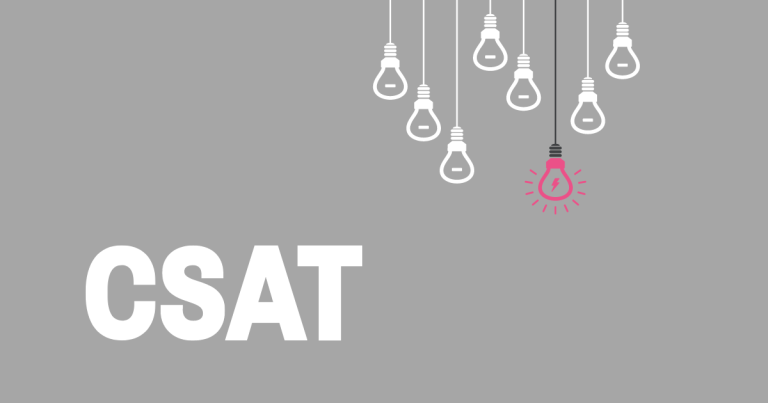Service level agreements (SLAs) define the support standards a customer can expect from your company while helping your teams know what they need to do to reach their goals.
In this article, we look at the main types of customer service SLAs, what they typically include, and the steps you can take to ensure you never miss your SLAs.
What are Customer Service SLAs?
A customer service SLA is a written agreement that sets the stands of support that a customer can expect from a company. A customer service SLA will often include details such as the availability, quality, and timeliness of the service being provided.
Customer service SLAs are often more detailed in business-to-business relationships than in business-to-customer relationships. When you’re providing a service to a company that’s crucial to their business, they want to know precisely the level of support they’ll get from you. This is where a customer service SLA comes in.
The Four Types of SLAs
Customer-based SLAs
A customer-based SLA is specifically tailored to meet the needs of a particular customer or group of customers. It is a contractual agreement between your business and your customer that outlines the specific standards for support your company will provide. These standards can include things like response times, resolution times, and availability guarantees.
The purpose of a customer-based SLA is to establish clear expectations for both your business and your customer, ensuring that the customer receives the level of service they require and your company can meet those expectations.
Customer service SLAs
A service-based SLA establishes a specific set of standards for support promised to all customers using a particular product or service.
This type of SLA is not tailored to meet the needs of any specific customer or group of customers but rather is designed to ensure that all customers receive a consistent level of support.
Internal SLAs
An internal SLA is a service-level agreement between different departments or teams within your organization. It outlines the specific standards and expectations for support and cooperation between these teams to improve efficiency and accountability within your organization.
Internal SLAs can cover various topics, including marketing, sales, customer service, and IT support. For example, an internal SLA might define how the marketing team will provide a certain number of qualified leads to the sales team each quarter or how the IT department will respond to and resolve help desk tickets within a specific timeframe.
The purpose of an internal SLA is to establish clear communication and expectations between teams, helping to ensure that everyone is working towards the same goals and is aware of their responsibilities.
You can use internal SLAs to reduce conflicts and misunderstandings, leading to better customer service and improved business outcomes.
Multilevel SLAs
A multilevel SLA is a type of service level agreement divided into different levels, each addressing different sets of customers with varying needs and expectations. This type of SLA allows for more flexibility in providing services to different customer groups while maintaining overall consistency and quality of service.
A typical multilevel SLA may have a corporate-level component that applies to all users, outlining the essential services and support that all customers will receive. In addition, separate agreements may cover specific customer groups or service tiers with more detailed terms and conditions.
The purpose of a multilevel SLA is to ensure that all customers receive the level of service they require while also allowing for more tailored services and support for different customer groups.
You can use a multilevel SLA to improve customer satisfaction and retention while maximizing revenue and profitability for your business.
What Does a Customer Service SLA Include?
Every customer service SLA should clearly outline the roles and functions of each party while setting specific, measurable expectations for the level of service offered.
1. Overview
Your agreement summary should outline the parties involved and give a broad overview of the business relationship and services provided. It will specify the effective dates of the contract.
2. Description of services
Clearly describe the scope of the services offered to customers. For customer service SLAs, you want to include the type of support agents will provide and its limitations.
It’s essential to define details such as what it means to get a response to a support request and to have a request resolved, as these building blocks will be used as the basis of more specific key performance indicators (KPIs).
3. Service availability
Define when and where customers will be able to get support. Even if you state 24/7 support is available, this doesn’t necessarily mean customers will be able to speak to an agent on the phone at all times. Self-service support options and AI-powered chatbots offer alternative options for out-of-hours support.
4. Service performance
The heart of your SLA agreement, the service performance section outlines specific metrics you will offer to your customer.
Common service performance metrics in SLAs include:
- Response time—How long it takes to provide a first response to a customer when they request assistance.
- Resolution time—How long it takes for an agent to resolve a customer’s query after a ticker has been opened.
- First Contact Resolution—How often a customer service issue is resolved on the first interaction.
- Hold time—How long a customer has to wait on hold before speaking to an agent.
- Customer Satisfaction Score—A measurement of how satisfied a customer is with a support interaction.
Typically, you’ll measure all customer service interactions over each month and take an average for the relevant KPIs. The SLA will specify the averages considered satisfactory or unsatisfactory, typically in line with industry standards.
5. Exclusions
To avoid attempting to offer a customer service SLA that agrees to deliver too much, certain limitations must be set on the agreement. Exclusions in an SLA set out some specific situations where the SLA won’t apply. Some examples of standard SLA exclusions include:
- Scheduled maintenance—Service disruptions caused by planned, required maintenance.
- Force Majeure events—Events beyond the control of your company, such as natural disasters or acts of terrorism.
- Issues caused by the customer—In the event the customer has improperly used your products or services outside of their intended use.
- Third-party service providers—Situations caused by third parties, such as issues with telecommunications or internet service providers.
- Out-of-scope activities—Anything not explicitly defined in the SLA as a service you will provide.
6. Penalties
Penalties set out the actual consequences of parties not meeting the SLA as stated. Penalties can include financial remuneration, service credits to offset the cost of future services, or contract termination. In many cases, an SLA will offer you some chance to improve your service before immediately severing the business relationship.
Penalties can also be specified for the customer. For example, an SLA could specify that if they use your services for illegal activities, you can immediately void any contract.
What Happens if You don’t Meet Your SLAs?
Failing to meet your SLAs can lead to declining customer satisfaction and loyalty. If a customer has an expectation of a certain level of service and that expectation isn’t met, they may become frustrated or dissatisfied with the business. This leads to negative word-of-mouth recommendations and even loss of customers.
If a business consistently fails to meet its service level agreements, it can harm its brand and reputation in the eyes of customers and potential customers.
Consistently failing to meet SLAs also lead to decreased employee morale and productivity. If employees cannot meet the standards outlined in SLAs, they may become demotivated or disengaged, leading to lower productivity and performance.
Not meeting SLAs can result in financial penalties or legal action. Many SLAs include penalties or compensation clauses if the business fails to meet its obligations.
Ensuring Customer Service SLAs Do Not Hurt Your Business
Deflect customer service requests
You can take some strain off your customer service SLAs by reducing the number of customer service requests you receive in the first place. Several methods are highly effective:
- Include an easy-to-browse knowledge base on your website so customers can find answers to their issues independently. Consider the use of video tutorials.
- Anticipate potential customer service requests by analyzing customer data. Provide guidance on potential issues before the customer calls you through tutorials, user guides, regular product updates, and other proactive support.
- Consider using chatbots that simulate a conversation with a customer on your website, messaging platform, or social media. Chatbots are a self-service option that can automate simple tasks and direct customers to online manuals and user guides.
- Interactive voice response (IVR) systems can automatically direct customers to the correct department or offer them the information they require based on the responses they provide.
Focus on the right SLA metrics
- Meet customer expectations: SLAs not aligned with customer needs and expectations can lead to dissatisfied customers. Focus on the right SLAs that prioritize the most critical aspects of your service and align with your customers’ needs and expectations.
- Improve efficiency: The right SLAs can help improve operational efficiency by setting clear goals and targets for your team. By focusing on the correct SLAs, you can streamline your processes, reduce waste and improve productivity, which can ultimately help reduce costs and increase profitability.
- Measure progress: SLAs are a way to measure and analyze the success of your service and track progress over time. By focusing on the right SLAs, you can better understand how well you meet customer needs and identify areas for improvement.
Clearly define all roles and responsibilities
A robust SLA lays out clear rules. Everyone involved, from the customer to support agents, should know what is expected from the business relationship, what is considered a breach of SLA, and the compensation or remedy the business will offer if the SLA isn’t met.
It is just as important to outline situations where the customer has breached an SLA. If a customer uses your services for illegal practices, for example, it would be grounds for canceling the contract immediately.
Get input from your agents
- Set realistic SLAs: Customer service agents are the ones who interact with customers daily and are the first point of contact for most customer issues. They’re familiar with the types of problems that customers face and how long it typically takes to resolve them. By getting their input, you can set realistic SLAs that reflect the time it takes to address customer issues.
- Better agent buy-in: When agents have input into the SLAs, they are more likely to take ownership of meeting those goals and work together to improve the customer experience.
- Identify areas for improvement: Customer service agents can help you identify areas where your service is falling short. For example, if agents report spending a lot of time on the phone with customers because of issues in payment processing, you will know to invest more effort improving that step of the customer journey.
Regularly review your SLAs and make adjustments
Reviewing SLAs can help ensure they remain relevant and aligned with current business goals and customer needs.
Perhaps you have more resources now so you can set a higher standard for SLAs. Maybe the marketplace has changed, with competitors offering more enticing SLAs, and you’re losing customers to them. Or, the products and services you supply have changed, so your SLAs need to be adjusted.
SLAs are a critical component of customer satisfaction. Regular review and adjustment can help ensure that customers continue receiving service levels that matter to them.
The Final Word
SLAs for customer support outline the service a client should expect from your company. It includes things like a description of services, expectations on service availability and performance, and penalties for not meeting those expectations.
SLAs are crucial for defining what your business is expected to do, and they help focus your customer service to deliver the service customers want. By ensuring your customer SLAs are relevant, achievable, and competitive, you can offer the highest level of service in your industry.
Did you like the post?
You might also like:

Surveypal
Everything you need to lead and improve your customer experience. Learn more at surveypal.com, or







